Hey there! Do you want to learn about the amazing Galapagos sea lion? Look no further – I’ve got you covered with 9 Galapagos sea lion facts!
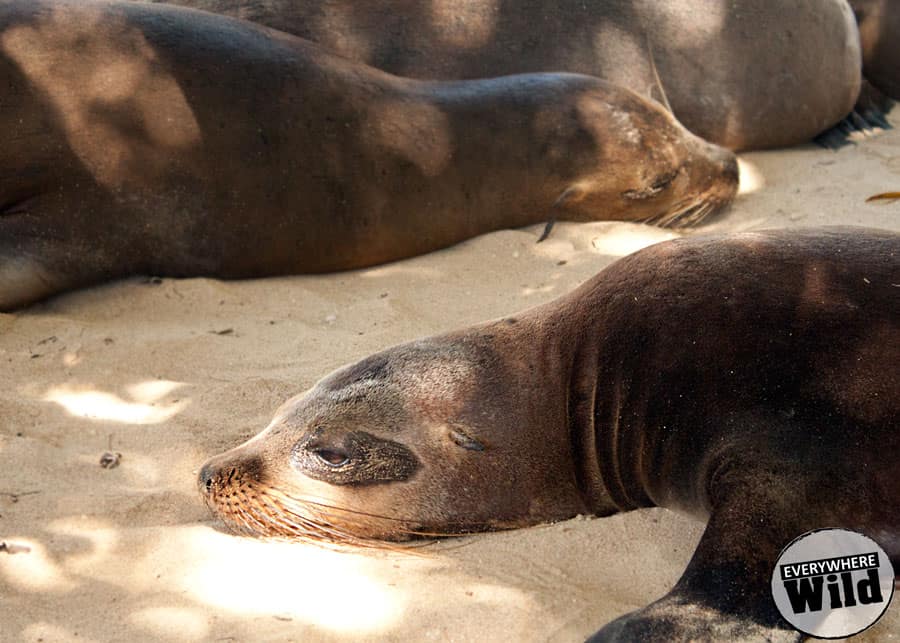
Table of Contents
Galapagos Sea Lions Are Amazing
Galapagos sea lions are so cool! They are like real life mermaids in the water; quick and graceful. On land, though, it’s a different story. Although they may still pose quite a threat if angered, they are generally slow, clumsy, and very… very… sleep-py-yy…
Although Galapagos sea lions are very cute, they can be very dangerous and territorial, especially around mating season.
On land, the sea lions will use their front and back flippers like feet and drag themselves around.
Galapagos Sea Lions by the Numbers
- Latin name: (Zalophus wollebaeki)
- Length: 59-98 inches (150-250 cm)
- Weight: 110-880 lb (50-400 kg), smaller than their Californian cousins.
- Color: The Galapagos sea lion has a beautiful golden sheen to their brown and black coat.
- Cool feature: Galapagos sea lions are endemic to the Galapagos Islands.
When we were in Galapagos, I would sit in the common area at our resort and just watch the sea lions. They reminded me of adorable, lazy dogs.
9 Cool Galapagos Sea Lion Facts
I hope you enjoy these great Galapagos sea lion facts!
1. Wacky Naming System
In English, as we know, they are called “sea lions.” In Spanish, Galapagos sea lions are called “lobos del mar” wich translates to “wolves of the sea.”
Back to English, a male Galapagos sea lion is referred to as a “bull,” a female is known as a “cow,” and a baby is called a “pup.”
So, we’ve got: lions, wolves, cattle, and dogs; all in one species! Say what?!
2. Gimme, Gimme, Gimme!!
Galapagos sea lions can eat, eat, eat! A male can eat 30-45 lb (13-20 kg) and a female can eat 15-25 lb (6-11 kg) – every day.
That’s like a guy eating 63 to 94 Big Mac’s every day! (Based on an average weight of 7.6oz per burger.)
3. What Do Galapagos Sea Lions Eat?
The diet of the Galapagos sea lion consists of 70% sardines. Blaaaahhh! Forget the Big Macs…
Some people love sardines. It’s all, “sardines this,” and “sardines that.” Sardines make me want to be a little bit sick. “Sardines” starts to sound really weird the more you say (or write) it. Sardines, sardines…
But to a sea lion sardines are fine dining!
4. Deep Diving
How deep can a Galapagos sea lion dive? They tend to average about 98-196 ft (30-60 m), but some have been recorded to dive up to (down to/up to?) 328 ft (100 m)!
To add a bit of context, humans, equipped with scuba gear and oxygen tanks, generally refrain from venturing deeper than 100 ft (30 m).
If they are going to dive deeper than that, they need special gas mixtures in their tanks so they don’t experience nitrogen narcosis, which can basically make a person feel and experience the symptoms of being drunk or high. Definitely a dangerous thing, especially when you’re 100 ft under!
This definitely gives me a new appreciation for how amazing the sea lions are. They freedive up to three times deeper than most people can with all of their special gear.
This raises the question: how long can the Galapagos sea lion hold its breath?
5. How Long Can Galapagos Sea Lions Hold Their Breath?
In short, Galapagos sea lions can hold their breath for up to 20 minutes.
I can’t even hold my breath for 1 minute! (Don’t tell anyone.) In people, brain damage starts to set in after 4 minutes without oxygen. Sea lions are truly amazing!
6. How Can I Tell Male and Female Galapagos Sea Lions Apart?
For one thing, the males are much, much larger than the females. Like, two or three times as big.
The males also develop a conspicuous bump on their foreheads when they reach the sea lion version of puberty. This makes it much easier to tell the male from the female, who has a smooth head.
7. The Galapagos Sea Lion Is Endangered
Unfortunately, the Galapagos sea lion is endangered. What does this really mean? Endangered means “likely to become extinct.”
There are only about 20,000-50,000 Galapagos sea lions left.
8. “I’m Getting Buffed; Ripped; Toned”
Okay, so maybe their size doesn’t have anything to do with their ego, but they do seem to be proud of it.
Male Galapagos sea lions are larger than females, with a thick, strong, neck, chest, and shoulders but have a small, slender butt (“abdomen”). At least sea lions don’t waggle their eyebrows.
Females, on the other hand, have longer, sleeker, necks and a thick torso.
9. Females Bark Back and Forth With Pups
I, for one, don’t like it when my mom “barks” at me. Fortunately, this doesn’t happen very often. For sea lions, though, this is the primary means of communication between mother and pup.
As soon as they are born, a mother sea lion knows her pup’s unique bark and can find him/her in a crowd of 30 or more barking sea lions. A mother will also bark to warn her pup of an approaching shark or other danger.
Are Galapagos Sea Lions Dangerous?
“How could something so sweet-looking possibly be dangerous?” That was my first thought.
However, sea lions can be very dangerous, especially the males in mating season. Why? They are very territorial and may view you as a threat.
When sea lions fight with each other, it’s scary to see. It can get very bloody and violent. If you’ve ever seen two males fight, it will definitely teach you to respect these giants animals.
They are called sea LIONS for a reason. However, if you show them the respect that they deserve, you shouldn’t have any trouble.

Sea lions love people!
There’s an awesome fish market on Santa Cruz (Galapagos) where there are tons of sea lions and you can see them up close. The pictures above and below are from that market.
Don’t Freak Out!
While they are dangerous, they don’t attack people – unless the people are being world-class idiots.
So just follow your guide’s instructions and you’ll be fine! I even got to snorkel with a juvenile male, who was not aggressive at all. It was totally awesome!
Galapagos Sea-ya-later Lion!
I hope you enjoyed my 9 awesome Galapagos sea lion facts! Please share your experiences with these beautiful (lazy) animals!
Learn about Galapagos Marine Iguanas and Giant Tortoises
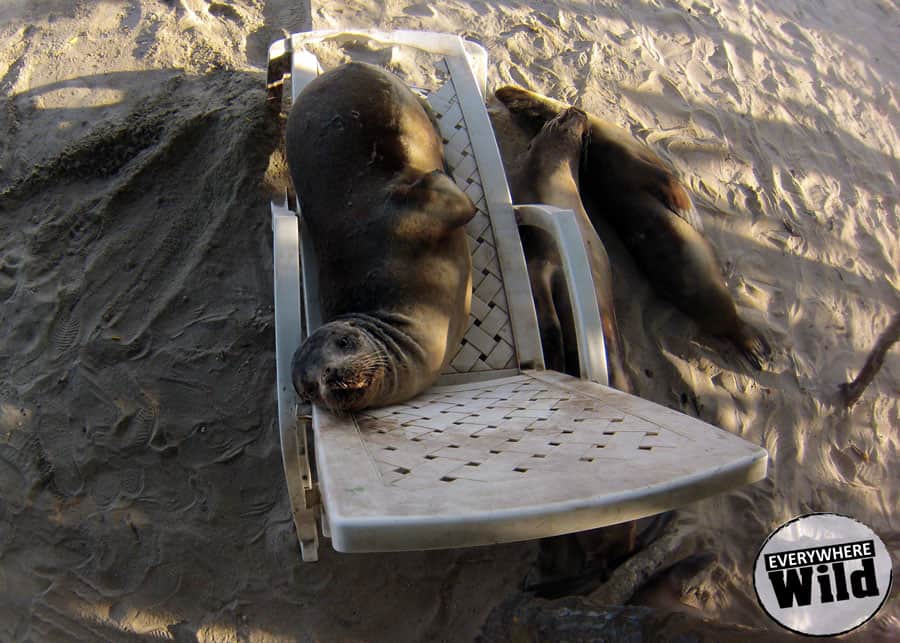
Drew Haines is an animal enthusiast and travel writer. She loves to share her passion through her writing.
She graduated high school at sixteen and started her own business, Everywhere Wild Media. And she runs Everywhere Wild and JustBirding. She also guest blogs on Storyteller.Travel
She lived in Ecuador for 6 years and explored the Galapagos Islands. Currently based in N.S., Canada.

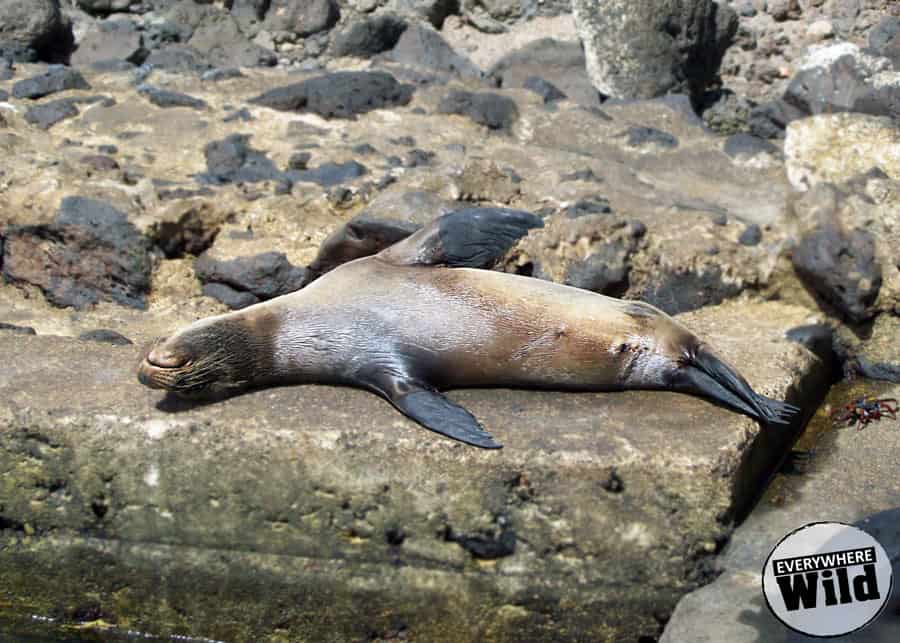
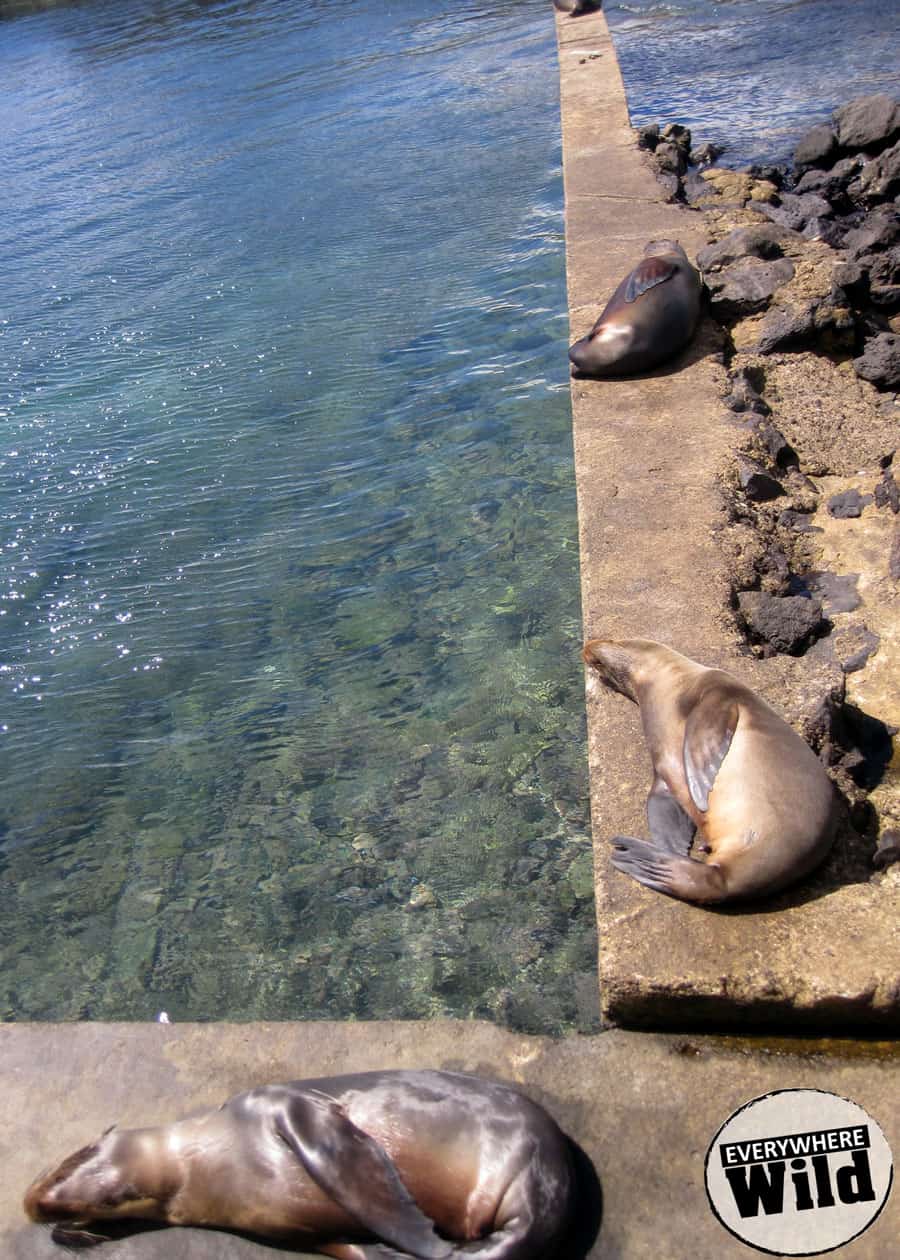
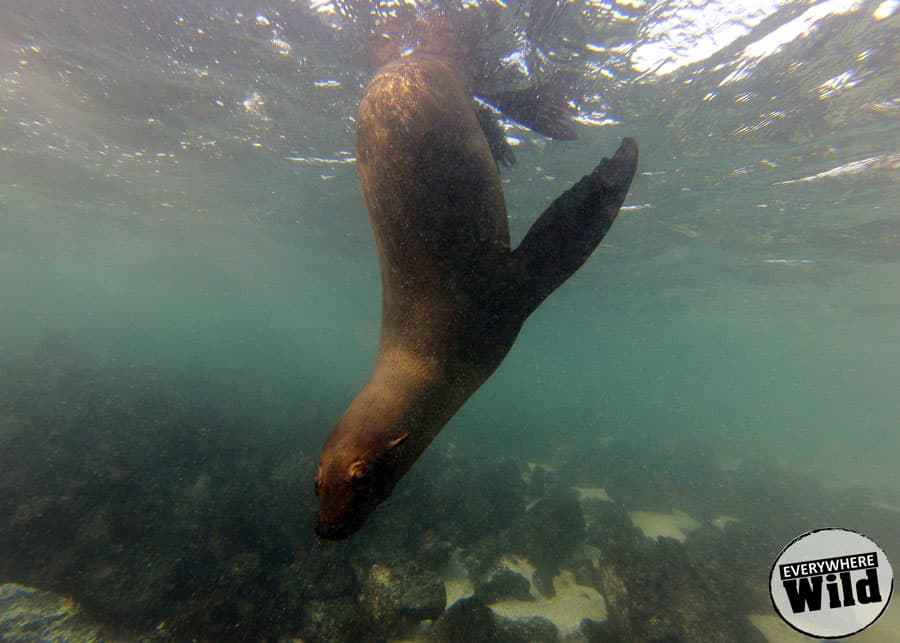

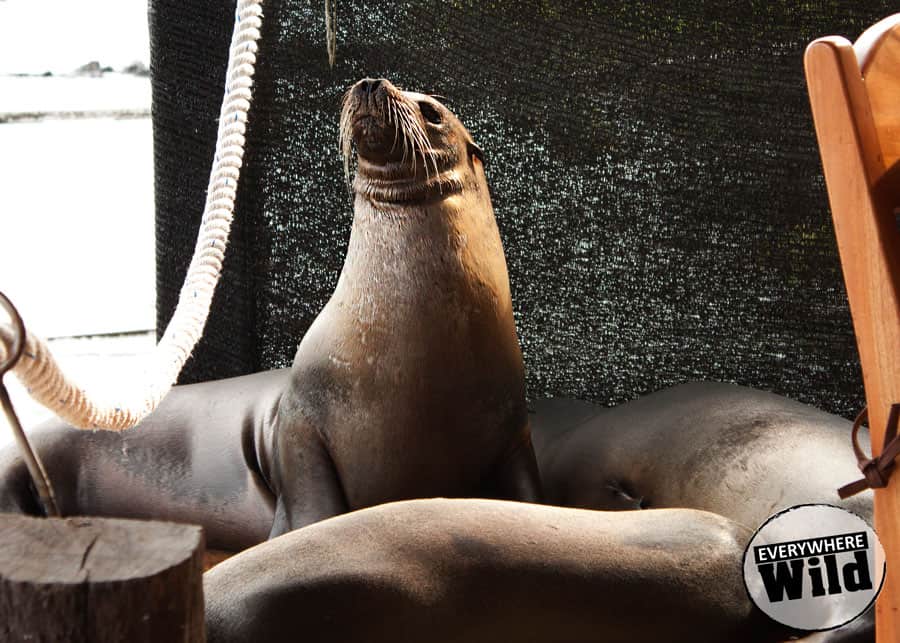

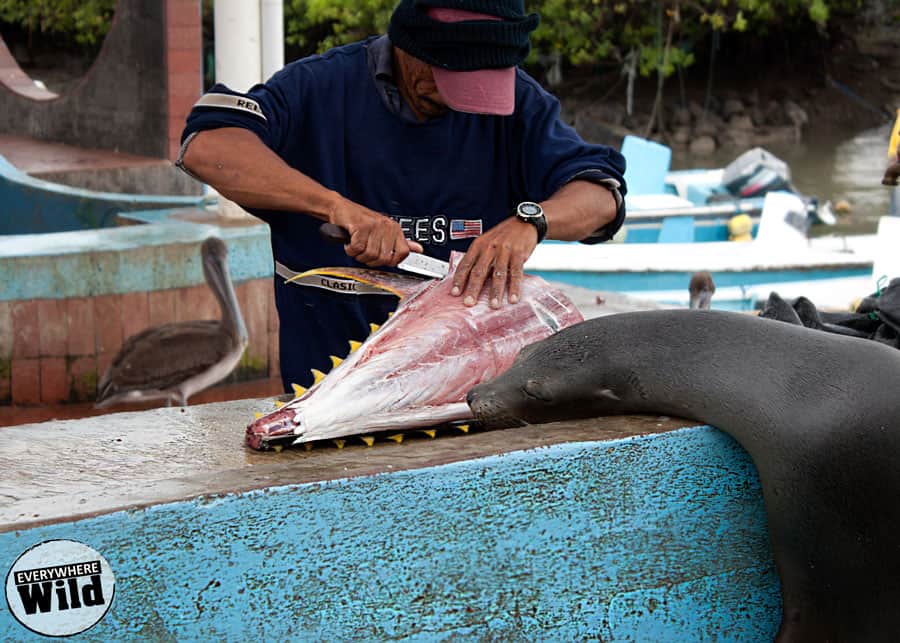
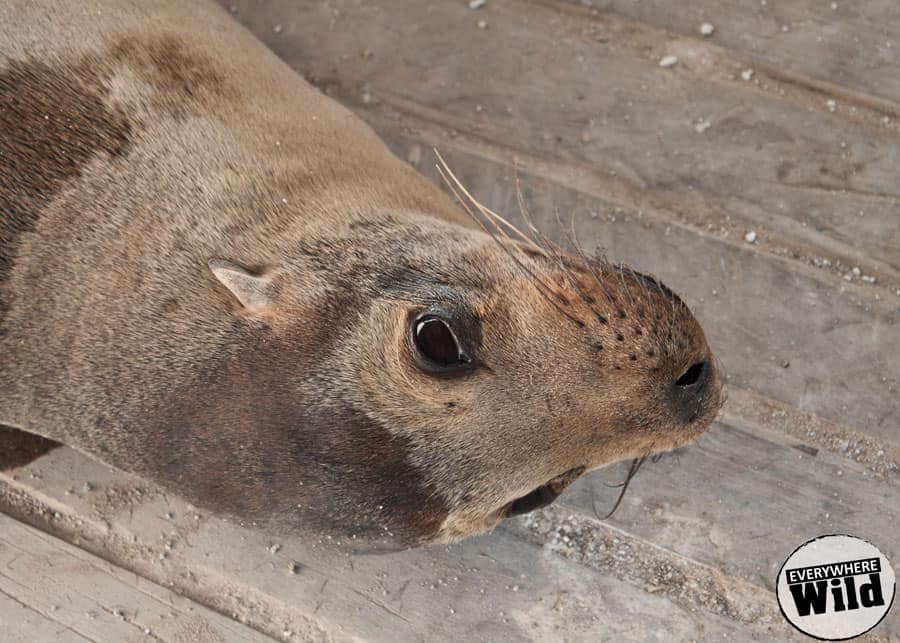
Claudia Hodari
Monday 1st of May 2023
Marine Iguanas will also eat fish when dropped by frigate birds etc and have seen them eating Sally Lightfoot Crabs and scrape the meat left on the grill after a BBQ
Kristine Robbins
Friday 5th of October 2018
Wow this little fellas are really cute. I wish i had one.
Trinity
Sunday 19th of November 2017
Hi Drew, I enjoyed this post and I really like your blog. It has a lot of good info and I like the way you write. We were in Galapagos last October and we saw lots of sea lions. There was one baby sea lion being rejected by her mom because apparently, some "world-class idiot" touched it. Sad, but hopefully your blog will help educate people. Keep on doing what you're doing.
Drew Haines
Thursday 31st of May 2018
Hi Trinity, thanks for your comment! I'm so glad you're enjoying my blog, I love writing it. I loved seeing the sea lions in Galapagos, definitely a highlight! Is there anything you would like me to cover on the blog? Thanks again for your comment!